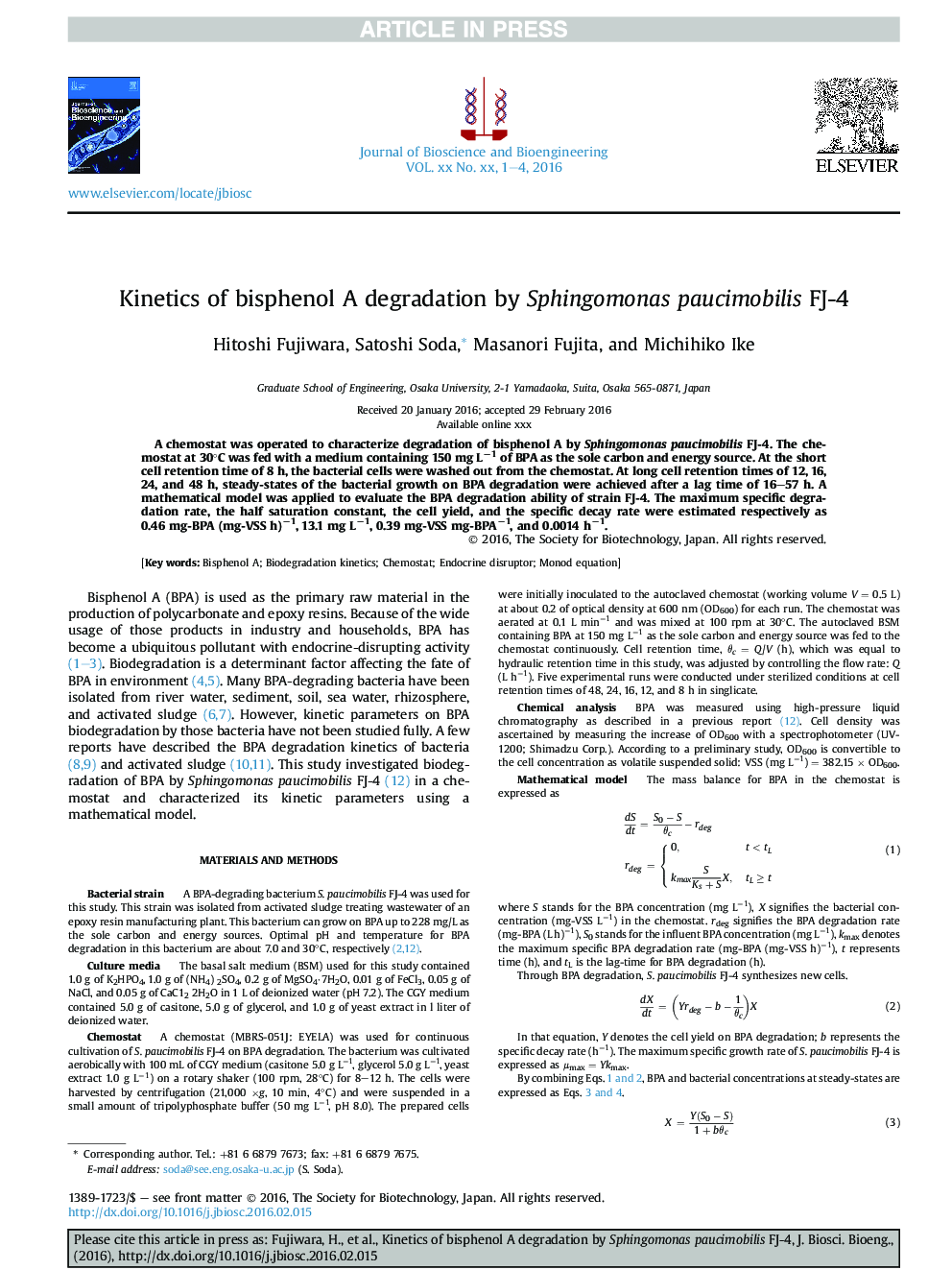| Article ID | Journal | Published Year | Pages | File Type |
|---|---|---|---|---|
| 19965 | Journal of Bioscience and Bioengineering | 2016 | 4 Pages |
Abstract
A chemostat was operated to characterize degradation of bisphenol A by Sphingomonas paucimobilis FJ-4. The chemostat at 30°C was fed with a medium containing 150 mg Lâ1 of BPA as the sole carbon and energy source. At the short cell retention time of 8 h, the bacterial cells were washed out from the chemostat. At long cell retention times of 12, 16, 24, and 48 h, steady-states of the bacterial growth on BPA degradation were achieved after a lag time of 16-57 h. A mathematical model was applied to evaluate the BPA degradation ability of strain FJ-4. The maximum specific degradation rate, the half saturation constant, the cell yield, and the specific decay rate were estimated respectively as 0.46 mg-BPA (mg-VSS h)â1, 13.1 mg Lâ1, 0.39 mg-VSS mg-BPAâ1, and 0.0014 hâ1.
Related Topics
Physical Sciences and Engineering
Chemical Engineering
Bioengineering
Authors
Hitoshi Fujiwara, Satoshi Soda, Masanori Fujita, Michihiko Ike,
